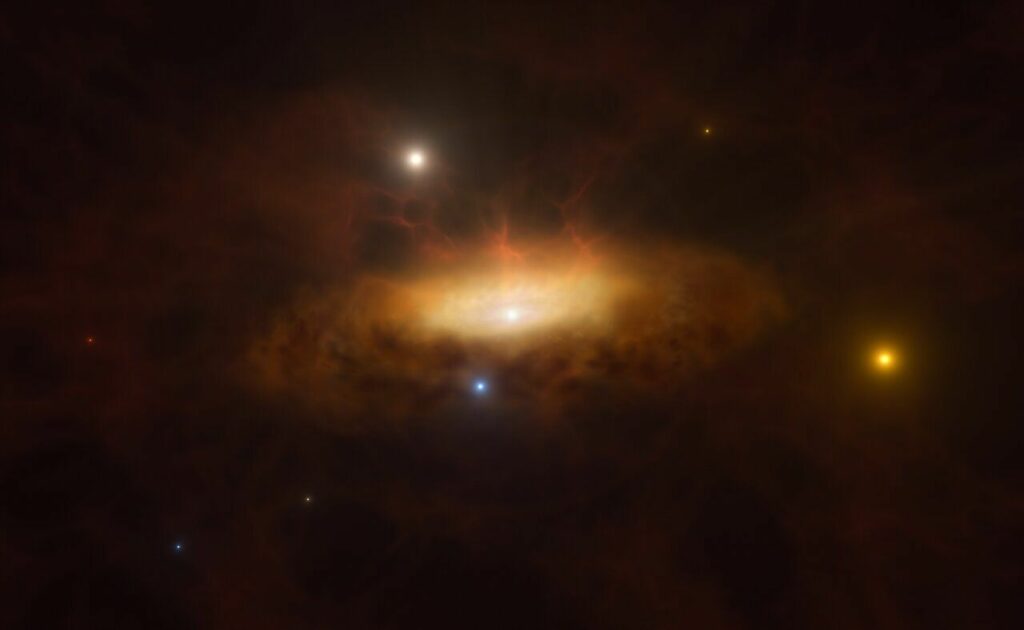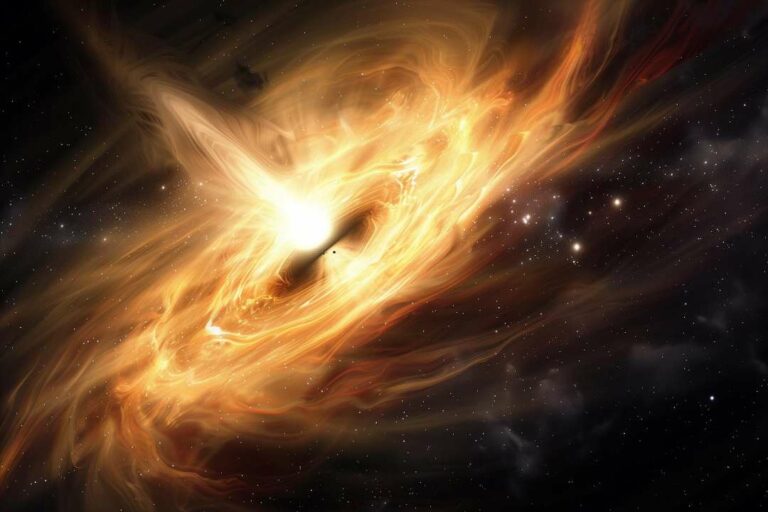Astronomers Witness a Massive Black Hole Awakening in Real Time
In late 2019, the galaxy, SDSS1335+0728 that was previously not very charismatic started to start brighter than it has ever done in the past. The cause was established by using data from many observatories including the European Southern Observatory’s Very Large Telescope (ESO’s VLT) to observe the variation of the brightness of the galaxy. A new study reveals that the astronomers are now seeing something that they have never seen before in a galaxy, which is most likely, the birth of a supermassive black hole at the galactic nucleus.
“The concept is easily understood as picturing a galaxy that has been under observation for years and appears to be dormant,” states Paula Sánchez Sáez who authored the study that is to be published in the Astronomy & Astrophysics Journal. “In September this year, its central part indicates large-scale fluctuations in brightness, which, as far as I know, has never been recorded before. ”
This is exactly what happened with SDSS1335+0728 which after a remarkable increase in brightness in December 2019 was reclassified to have an active galactic nucleus an AGN is a bright compact region powered by a central supermassive black hole.
Sudden outbursts that is associated with events such as supernovae or tidal disruption, in which galaxy is ripped apart by the black hole cause galaxies to shine. But such events are relatively short and can not last more than few hundred days at best. The source SDSS1335+0728 has been found to still be rising in brightness for more than four years. It lies in the Virgo constellation and has over time exhibited features of brightness variation and this prompted them to search for other causes of the observed phenomenon.
The research team carried out the comparative analysis of the galaxy state before and after December 2019 using the archival data and new observations with the X-shooter instrument of ESO’s VLT. What they discovered was that SDSS1335+0728 is now radiating a great deal more light at ultraviolet, optical and infrared wavelengths along with X-rays since late February this year.

“This behavior has not been documented before,” explains Sánchez Sáez who is also a part of the Millennium Institute of Astrophysics (MAS) based in Chile.
Instead, co-author Lorena Hernández García explains that the most likely reason for the current signal is that the core of the galaxy begins to wake up. “If this is true, it would be the first time that the scientists have witnessed the process of switching on of a giant black hole. ”
Supermassive, that is, black holes which are at least 100,000 times the mass of our Sun, is situated at the core of most galaxies including our home galaxy, the Milky Way. Usually, these black holes are non-active and hence are completely invisible to the naked technological eye. But in the case of SDSS1335+0728, it seems the black hole has ‘woken up’ and begun gobbling up material in its surroundings and thereby making it much brighter.
“This process has never been observed before” concludes Hernández García. Other works have shown that galaxies could turn active from being inactive; however, this paper shows AGN black hole awakening as the first time the process has been captured. Co-author Claudio Ricci emphasises that the same occurrence could happen to the black hole Sgr A*, at the heart of our galaxy, although the probability is not entirely clear.
More such observations are required to ascertain whether the changes in brightness are due to the event’s slow rate of progression or a phenomenon completely different from any previously witnessed TDE. If ever it is a TDE, then it would be the longest and the least luminous TDE discovered to date.
However it came to be, this galaxy is valuable in helping understand how black holes are formed and develop. Sánchez Sáez underlines that the future instruments, for instance, MUSE on the VLT or the instruments on ELT, which is to be launched in the future, will be important to comprehend why this galaxy grows brighter.
This research is documented in the paper: SDSS1335+0728: The awakening of a ∼ 10 6 M ⊙ black hole, Astronomy & Astrophysics.
Reference: P. S’anchez-‘aez et. al, SDSS1335+0728: The awakening of a ∼ 106M⊙ black hole, Astronomy & Astrophysics (2024). DOI: 10.1051/0004-6361/202347957
Do not forget to share your opinion with us to provide you with the best posts !




0 Comments